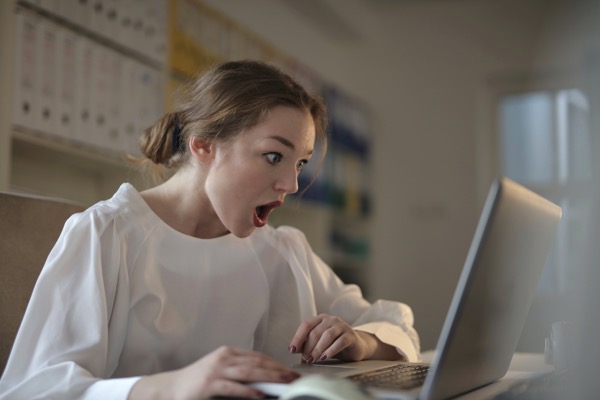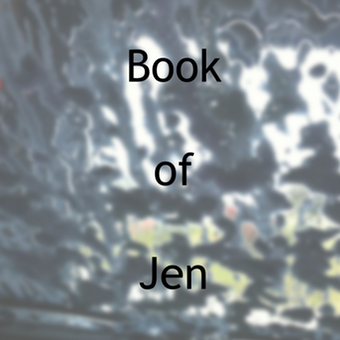
You posted your most recent piece of art on your Twitter account to show your friends and fans. Someone you have never interacted with responds with an @ to an account you’ve never heard of and with a string of letters and numbers that look like complete gibberish. What’s going on?
The short answer is that a despicable person has put your tweet – including your art that was part of that tweet – on the blockchain. There is nothing you can do to remove it from there. How horrifying!
Even worse, the art thief intends to sell your tweet – that includes the image of your artwork – for a large amount of cryptocurrency. The thief will keep all of it. You will get nothing.
Those of you who are not artists (or who never post their work on Twitter) may think you are safe from being the target of these shenanigans. Not so! The same ne’er do wells are putting tweets that have no art or other image attached to them on the blockchain, too.
How did this happen?
Jack Dorsey, CEO of Twitter, may be the person who unintentionally started this problem. He put his very first tweet: “just setting up my twttr” onto the blockchain as a non-fungible-token (NFT). He then put a screenshot of that tweet on Twitter, along with a link to the Valuables listing – where people could bid on it.
To be clear, it is entirely legal to put your own tweet onto the blockchain. You own that content.
Unfortunately, many nefarious jerks decided to interpret what Jack did as a free-for-all that allowed them steal other people’s content and put it on the blockchain as an NFT. That’s not how this is supposed to work!
Here are some things you can do to protect yourself from having your content put on the blockchain by horrible people:
Make your Twitter account private
Twitter has instructions on how to protect your tweets. The instructions are slightly different depending on if you use Twitter on iOS, Android, or on your computer desktop.
Follow the instructions and your account will have a little lock icon placed on it. Those who you are already following will still be able to see your Tweets. Accounts who you are not following will not be able to see your tweets.
No one will be able to retweet or quote-tweet your Tweets while your account is protected. Followers will be able to click “like” and can respond to your Tweets.
Now is a good time to check who is following you that you are not following. You can get rid of the ones you do not trust by blocking them and then unblocking them.
Why this works:
Many of the content stealing thieves are reliant upon a specific Twitter account called @ tokenizedtweets in order to put something on the blockchain. To make that happen, they need to respond to the Tweet they want to steal by @-ing tokenizedtweets. Doing so will generate a series of letters and numbers that look like gibberish to people who don’t use cryptocurrency.
Other art thieves are doing something similar with other types of cryptocurrency. So, you might see a partial word with a short link after it in a response to one of your tweets. That person has stolen your tweet (and the art that was in it) and put it on the blockchain.
If you block @ tokenizedtweets, it prevents that account from seeing your Twitter account. The result is the selfish people who try to steal your art (or a tweet with no art in it) in an effort to financially enrich themselves… will find that they cannot.
Unfortunately, those who are using other kinds of cryptocurrency to put content they do not own on the blockchain don’t use @ tokenizedtweets to filch your work. They can still steal your content by replying to one of your tweets with a shorter, different looking code.
Protecting your Twitter account is your best defense against them, because it stops them from seeing your tweets. If they cannot see it – they cannot steal it.
Report and Block
If you have the time and energy, you can help stop the art thieves by reporting and blocking them. One really interesting quirk of this whole situation is that the thieves have to tell on themselves every time they commit the crime of art theft (or theft of other content they do not own).
When you see a tweet that has been replied to with the gibberish that the thieves are using, take a second to check and see if the account holder is the one who put their own content on the blockchain. They own it, so they are allowed to make that decision.
If it was someone else who put it on the blockchain – report that tweet. Next, go to that account and click “Tweets & Replies”. Scroll through the account and report every tweet in which the person behind the account stole someone else’s work. Then, block the account.
My hope is that if enough people do this, it will eventually signal to Twitter there is a big problem that they must act quickly to resolve.
There are some signs that Twitter is starting to do something about this problem. I have seen that two of the offending Twitter accounts are now suspended. There is one more that is “temporarily unavailable because it violates the Twitter Media Policy”. This is a very slow moving start.
It benefits Twitter to crack down on content-thieves.
Twitter needs interactions – tons of interactions between a multitude of accounts – in order to make money. It is my understanding that interactions are what pays the bills. Twitter can show companies that purchase ads on Twitter how many accounts saw their ad and/or responded to it.
Right now, artists are protecting their Twitter accounts in an effort to keep control over their own creations. Websites that focus on tech-related topics are writing about the huge problem of art theft that is happening. It is becoming widely known. That’s a real bad look for Twitter.
The longer it takes for Twitter to fix this problem, the more it encourages people to protect their accounts. Those accounts get less interactions by default, which probably isn’t good for Twitter.
It is entirely possible that some artists will see this situation as a “last straw” (especially if they have already had their work stolen and put on the blockchain without their permission). There are tons of artists on Twitter. If a significant number of them delete their accounts – that has the potential to harm Twitter.
Put your own art on the blockchain yourself
What if you don’t want to have a protected account? Some artists have taken the step to put their art on Twitter and immediately put it on the blockchain before someone else can steal it and make money off it.
Personally, I don’t use cryptocurrency, so I cannot explain exactly how those artists are making that work. My best guess is that they already had cryptocurrency beforehand, and are using their knowledge and skills to take control of their art.
How to Protect Your Art from NFT Art Thieves on Twitter is a post written by Jen Thorpe on Book of Jen and is not allowed to be copied to other sites.
If you enjoyed this blog post please consider supporting me on Ko-fi. Thank you!

I want to put artwork on twitter with a protected watermark..but When I go to join Twitter wants access to my unprotected camera and gallery…is this right…
Thank you for the comment, Irene.
I have posted some of my art to Twitter in the past. Twitter has never asked to access my camera and gallery. To me, it sounds like something is going wrong there.